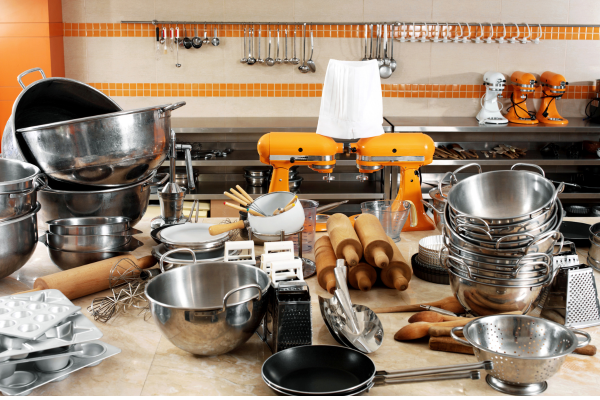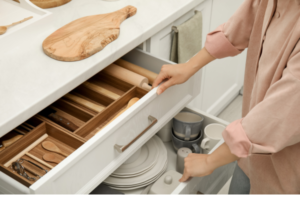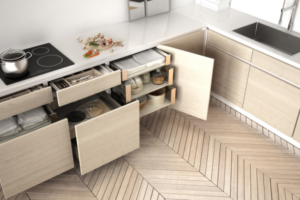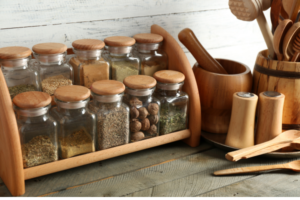Introduction
A well-organized kitchen stands as the heart of a home, where delicious meals are crafted and cherished moments are shared. Central to this hub of culinary creativity lies the often-overlooked hero: utensil organization. Picture a kitchen where every tool has its designated spot, where chaos gives way to order, and efficiency reigns supreme. This article unveils the secrets behind effective utensil organization, showcasing how this simple yet crucial practice can transform your kitchen into an oasis of productivity and culinary delight.
Importance of Utensil Organization
Utensil organization isn’t merely about creating an aesthetically pleasing space; its impact goes far beyond the surface. A meticulously organized kitchen significantly streamlines meal preparation. It’s the difference between seamlessly reaching for the perfect whisk or spending precious minutes rummaging through cluttered drawers, disrupting the rhythm of your culinary creations.
Strategies for Utensil Organization
1. Declutter First:
Begin your journey to an organized kitchen by decluttering your utensils. Rid yourself of damaged or redundant items, keeping only the essentials. Group similar utensils together to simplify categorization.
2. Utilize Drawer Dividers:
Drawer dividers or utensil trays are indispensable tools for maintaining a tidy arrangement. Assign specific sections for different categories such as spatulas, ladles, tongs, and whisks.
3. Hang Utensils:
Maximize your space by installing hooks or racks on walls or cabinet doors. Hanging utensils not only saves drawer space but also ensures easy accessibility.
4. Utilize Wall Space:
Make use of magnetic strips or pegboards mounted on walls for versatile storage solutions. These innovations display and provide access to utensils while freeing up valuable drawer or counter space.
5. Label or Sort Containers:
For smaller utensils like measuring spoons or pastry brushes, employ labeled containers or bins. This method ensures swift identification and access when needed.
6. Consider Frequency of Use:
Strategically place frequently used utensils within easy reach, reserving less accessible spaces for items used less often. This approach optimizes workflow and efficiency.
7. Customize Storage Solutions:
Tailor your organization to fit your kitchen’s unique layout. Utilize under-cabinet space, vertical storage, or over-the-door organizers to maximize every inch of available space.
The Psychological Impact
Beyond the tangible benefits, an organized kitchen positively impacts mental well-being. A clutter-free environment fosters a sense of control and calmness, reducing stress and enhancing the cooking experience. Knowing where each utensil resides instills a feeling of competence, elevating your culinary prowess.
Maintenance Is Key
Sustaining an organized kitchen requires commitment. Regularly audit your utensil storage to uphold the designated order. Ensure utensils return to their allocated spots after use, preventing clutter from encroaching upon your culinary sanctuary.
Innovative Organizational Tools
Technological advancements have introduced innovative utensil organization solutions. Smart storage systems with customizable compartments and automated organizers further streamline the process. Additionally, specialized apps assist in inventory management, suggesting optimal placements and reminding users to declutter periodically.
Conclusion
Utensil organization transcends mere tidiness; it’s about transforming your kitchen into an efficient and harmonious workspace. Embracing strategic organizational techniques, prioritizing accessibility, and committing to regular decluttering will make your culinary endeavors smoother, more enjoyable, and ultimately, more delectable.



